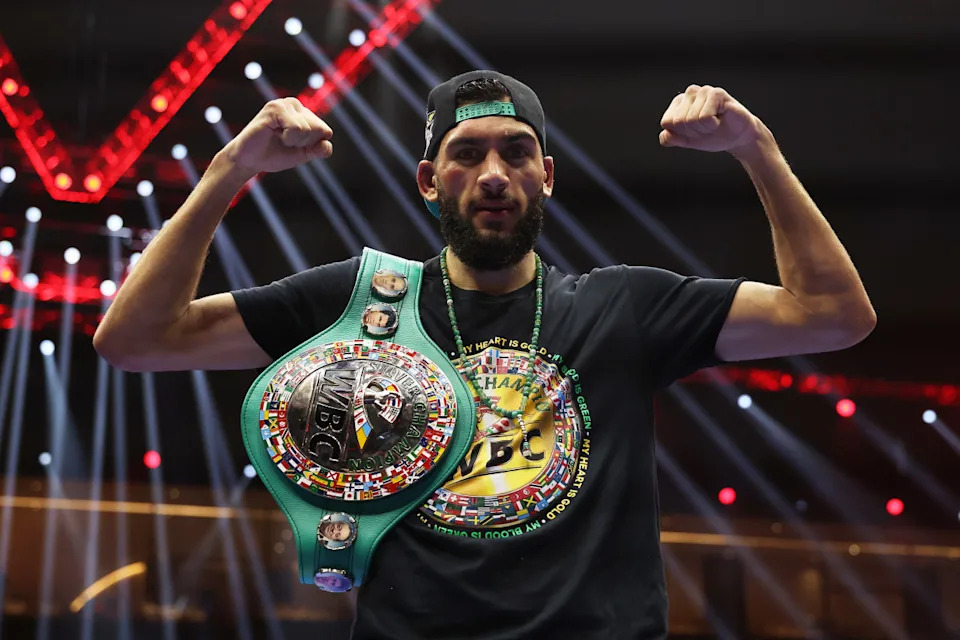Sometimes, the most valuable lessons in professional sports arrive not with a decisive victory, but with a stark, uncomfortable moment of truth. For British middleweight prospect Hamzah Sheeraz, that moment came unexpectedly in February.
Widely tipped as the heir apparent in Britain`s middleweight division and holding a formidable knockout streak, Sheeraz was expected to overcome Carlos Adames and claim a world title. However, the fight unfolded differently. As rounds ticked by, it became increasingly clear that Sheeraz was struggling, prompting unusually vocal instructions from his corner, including input from none other than promoter Frank Warren and influential figure Turki Alalshikh. Warren`s candid admission later – “listen, you don`t win these next three rounds, you`ve lost it,” – underscored the gravity of the situation ringside.
The bout ultimately ended in a draw, a result that felt less like a stalemate and more like a fortunate escape given the pre-fight expectations and Sheeraz`s visible difficulties. It was later revealed that a broken hand compounded his issues, alongside a reportedly challenging weight cut at 160 pounds. A difficult night, certainly, but perhaps a necessary one.
This inflection point triggered significant changes. The first logical step was a move up in weight class to super middleweight, a division likely better suited to his physique. The second, and perhaps most impactful, was a change in his training setup. Sheeraz relocated to Ireland to work with Andy Lee, a former world champion and highly regarded coach whose recent successes, like revitalizing the career of heavyweight Joseph Parker and guiding Ben Whittaker to a swift rematch victory, speak volumes.
Sheeraz describes the move to Dublin, a considerable departure from his previous training base in Los Angeles, as “amazing” and “refreshing.” After four or five years in LA, he felt things were becoming repetitive, a state that can breed complacency or “bad habits,” as he put it. The change in scenery and routine appears to have provided a much-needed jolt. Working with Lee feels natural, not “forced,” largely because Lee has “been there and done it” at the highest level as a fighter himself, instilling immediate confidence.
Now, the stage is set for Sheeraz`s return, a statement fight aimed squarely at announcing himself to the American audience. His opponent, Edgar Berlanga, is a fitting adversary for this transatlantic debut. Known for his punching power and, as Sheeraz notes with a touch of pragmatism, a propensity for “talk[ing] a lot of smack,” Berlanga brings attention and presents a genuine challenge. For Sheeraz, the task is simple, though certainly not easy: “go in there, perform and it makes my job easier” by letting the fighting do the talking.
Before the Adames fight, Sheeraz`s talent seemed limitless, backed by a remarkable 15-fight knockout run. The draw served as a crucible, forcing him to confront limitations and areas needing improvement to compete at the elite “world level.” He views the Adames experience as a potential “blessing in disguise,” a tough lesson that could pave the way for future success.
Frank Warren understands the magnitude of the upcoming test in New York. He acknowledges that Sheeraz is diving “straight in the deep end” against a “bully type of fighter” who will have the home advantage. The instruction is clear: Sheeraz must “be the boss” in Berlanga`s backyard and establish his authority. It promises to be a less comfortable night ringside for Warren, perhaps mercifully devoid of needing to shout last-minute instructions, but a pivotal moment nonetheless for his charge.
The narrative is compelling: a highly-touted fighter faces a setback, makes drastic changes under the tutelage of an acclaimed coach, and now seeks redemption and global recognition on a significant American stage. The Sheeraz under Andy Lee is ready to be unveiled, and the fight against Edgar Berlanga is his opportunity to prove the transformation is complete and his star potential remains undimmed.

